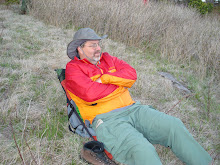This article helped me reexamine what I was going to take to Philmont, and maybe the most important part was to understand that the official Philmont gear list is the maximum that you should take with you. It is about what you need not what you want. Your crew needs to take advantage of the fact that it is going as a group. So do you need 12 pocketknives, how many tubes of toothpaste, would one first aid kit be enough? Use the crew to divide the load and split the seldom-to-almost-never used stuff (who brushes their teeth at Philmont?). Keep your own TP, but the crew should have the group supply.
I took a second shirt because I wanted to have a dry shirt to put on if it rained. If it is the mid 50’s or above I don’t put on a raincoat while I’m hiking in the rain. It is too hot inside any “breathable” shell that I have ever worn if I’m trudging up a trail, so the heat and sweat would make me more uncomfortable then just being wet. That being said, if you can hike early in the day at Philmont and avoid the afternoon thunderstorms you can often avoid the hiking in the rain problem. I want to have a dry shirt to keep my core warm after I stop hiking, plus I can wash a shirt and have a dry one to put on. Mostly I used one shirt as my hiking shirt and the other as my camp shirt. My camp shirt was a Columbia long sleeved shirt with the air vents in the back, while my hiking shirt was a merino t-shirt (Icebreaker). If you want to keep the stench down then you need to go with merino because the synthetic shirts will become nasty in a day or 2. I also carried no underwear, just like the author of the article. I used the built-in briefs of running shorts with pockets and the same zipoff pants that author used. You need long pants for many of the programs that Philmont provides and I use a rain skirt instead of rain pants, so I needed another pair of pants. I love hiking in my running shorts and the extra airflow provided by the built in briefs helps to make it more comfortable to hike, there is a reason that hiking kilts have a popularity with some long distance backpackers.
Philmont requires separate sleep clothes so that you have no smellables in your tent. I used a merino shirt and the lightest running shorts I could find (with no built in briefs) to get as much air flow as possible.
I would recommend the Dri ducks rain suits for most Scouts because they are light and cheap. They can be your pants and windshirt, but they are just Tyveks so they are not bombproof.
Use your shakedown hikes to work out what is best for you.
I wanna go back to Philmont.




No comments:
Post a Comment